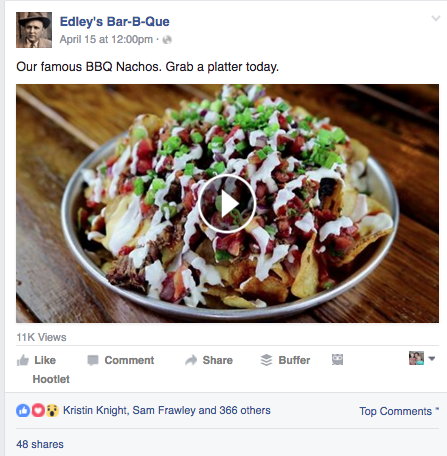Give yourself some credit. Marketing is tough, especially with all the options out there.
If you feel like you’re constantly trying new things to get your brand ahead of the stiff competition, join the club. And if you’re not failing every once in awhile, you’re not trying hard enough to be different!

Who is your audience?
What messaging will resonate with your audience?
Is your audience changing as your company grows and new products are offered?
And after these are answered, here comes a new flood of questions. It tends to be a never-ending cycle of research, trial and error, and more research to stay on top. Our industry is constantly evolving as users and their behaviors change.
As tactics get more and more sophisticated, you are faced with balancing online (digital ads and content marketing/social media) and offline efforts (TV, magazines, billboards, radio, buses, etc.).
It all comes down to impressions and the cost associated with reaching your audience at a place where they can take action.
You’ve got tough decisions to make as far as where your marketing dollars go, and knowing what impressions are and what they mean for your marketing budget can help you make those decisions and in turn justify the investment.
What is a digital impression?
An impression is simply a view. It means that a set of eyeballs has seen your content. If we’re getting technical, there is a difference between a served impression and a viewed impression. When an ad is served, you have essentially told the platform to show the ad. The place could be in a Facebook news feed, at the top of a website, in the right hand column of a website, anywhere that you’ve seen ads as you move around the web. But just because it is served, doesn’t mean that it has been viewed. For example, if your ad is still loading when the viewer clicks away, you will have a served impression but not a viewed impression. A viewed impression means that the person who saw your content had the opportunity to engage…ooooo…we’ll come back to this.
With digital, the audience is smaller, but much more purposeful. Think about a newly engaged female seeing your ad promoting wedding gowns or a high school senior seeing your ad encouraging a campus tour.
With traditional media, the amount of impressions is high, but what is the value? We’ll explore…

Traditional media impressions
Traditional media is an expensive way to reach a select group of people. By advertising on buses, billboards, magazines, TV, you get the value of sheer numbers. But is the message reaching YOUR target audience?
Let’s focus on billboards. They make a case by throwing crazy numbers at you. “A whopping 250k people will see this billboard,” they say. “Don’t you want to get your name and/or product out to as many people as possible?” they ask. Nope. Not if you care about the cost per impression. The real question to ask is how many of those 250k are your customers. Will people that see your billboard be actively searching for their dream college or a pest control company? Sure. But, how much are you actually paying to reach that small percentage?
The truth is, you don’t know who actually saw the billboard. It’s a guessing game at best. With traditional media, you work from averages – there are no concrete numbers. You have “served” ads to a broad audience, but you don’t know the “viewed impressions.” Demographics change, folks change jobs, and road construction happens. All of this impacts the people that see your billboard.
Are viewers at a place where they can take action? Surfing the internet while driving is frowned upon, and passengers most likely have their heads in their phones.
Has the viewer given any signals that they are ready to take action? Brands have to give value before they ask for action, which is why a content marketing strategy always includes light brand awareness content that leads users to conversion content.
Will the billboard speak to their demographic? Different age groups digest content in different ways. Custom messaging that relates to segments of your audience will have a bigger impact than one message broadcasted to the masses.
For all the reasons above, the value of an impression from a billboard is greatly diminished because you are not targeting based on your audience.
Digital impressions
Digital impressions are measurable. Every set of eyes that hits your content registers as a viewed impression and gives you a real number of how many people have seen your content. Your overall content marketing strategy will include a strong social presence with unique copy and images (and an authentic flare that has the aroma of a well-defined culture) as well as blogging and white papers. Then, the fun begins. This is where you amplify your content to both your fans and those who want to be fans and customers – they just don’t know it yet.
The post below shows over 11k views and 48 shares. This exposure came from a nominal investment of less than $25 targeting fans. We also spent $34 targeting non-fans in a certain zip code which reached another 6k people on top of the ad below.

We’re talking quality over quantity. Instead of playing the odds with traditional media, digital ads can hone in on your audience knowing that they will be most likely to convert. The result – spend less, convert the customers you really want.
Digital is targeted – There are tools available to analyze your audience and find out what their traits are as well as how they digest content. The reporting that comes from campaigns let’s you know how to adjust going forward. And it’s ok if a campaign is not successful! The lessons that arise can be that the audience didn’t like the image or the copy. Or, maybe the audience wasn’t ready to convert yet. When you’re playing with $500 vs $10,000, it’s ok to regroup and try another tactic.
Digital is flexible – Once a viewer has seen the same ad 2-3 times, content needs to change. When you refresh the copy and/or image, engagement will spike again. People get bored with the same message, and will not engage if they are shown the same content over and over (sound like a billboard?).
Viewers can take action – By showing content on a mobile or desktop or both, you are hitting your audience when they are surfing the web, and where they can take action. They like the content, they engage.
Conversions 101
What is your call-to-action, and what counts as a conversion in your industry? Whether it is to sign up for a newsletter, schedule a tour, or fill out a form on your website (did they see a black widow spider, and they need pest control, like yesterday!), you can track your online marketing efforts by measuring conversions. The number of conversions and value of conversions will differ by company. If you know that for every ten campus tours, one student selects your college, then a student scheduling a tour online is a pretty big deal and has a high value.
The downfall of traditional marketing is that you can’t accurately measure conversions. There are round about ways to get an idea, like using a different phone number on a billboard to capture how many people saw the number and therefore called. But it still requires someone diligent enough to track that manually.
Digital impressions vs. offline impressions
Are digital impressions worth more than offline impressions? Yes. With digital, you pay based on impressions, engagements, and conversions. With billboards, you pay based on the chance that a certain group of people will probably see your ad.
The big picture is that digital impressions, while fewer, are targeted specifically to your audience with an intent to move them to engage with your brand, then convert. Ad dollars spent online are measured by impressions, engagements and conversions. And you get pretty reports to prove it!
This is a fascinating time for marketers. With so many outlets at your fingertips, which ones do you tackle and which do you ignore? A whole marketing strategy is more than networking events, buying billboards and tv spots, and posting to your Facebook page these days.
We’re not saying that offline doesn’t work at all. There is a time and place for these ads. However, we hope we’ve shown you that the digital space is not only FUN but extremely effective.
Want to learn more about digital marketing?

